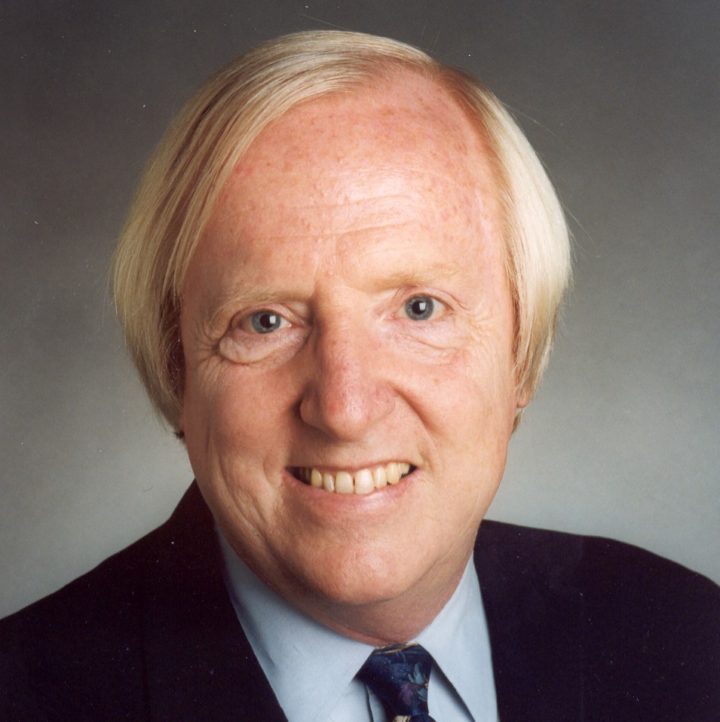Podcast: Play in new window | Download
Chip Bell is one of the world’s top experts on customer loyalty and service innovation, as well as a very wise man. In this podcast, he shares his vision on several topics, including the nobility of service, the importance of appealing to higher motivations, and the characteristics of one of the most impressive leaders he has ever worked with.
One of the highest accolades I can give a speaker is that he or she made me want to be a better person after hearing them, and I trust you will agree with me that Chip does just that, in this podcast.
Podcast: Play in new window | Download
In a recent podcast, I spoke about how important it is to ask for what you want. If you don’t ask, you don’t get. I devoted just one paragraph to dealing with rejection; I basically said, just get over it.
But of course that isn’t enough. Fear of rejection is too important to dismiss with just a few words, so I’m going to try to tackle it in this podcast.
But I’m not going to do it by myself. I have help, although he doesn’t know it yet. When I was working on my last podcast, I came across a fascinating video by Jia Jiang, What I Learned from 100 Days of Rejection. I was so captivated by his message that I bought and immediately devoured his book, Rejection Proof, and I’m going to share some of his wisdom, mixed together with some of my own ideas.
The hardest door to open
If you have a great idea or special desire, who among all the people in your circle of influence is most likely to reject it, to say no, to squash your dream or strangle your aspiration before it gets a chance to see the light of day?
Let’s put it another way: if you’re in sales, who is the toughest gatekeeper to get around, the one who most consistently blocks you from talking to the decision makers? Who really keeps you from talking to high level decision makers?
I spent a year once in a sales job that required me to cold call on real estate offices and try to sell them on my company’s mortgage offerings. Those calls were never easy (it didn’t help that it was in an era when we charged 18% interest and 10 points), but I learned very quickly one fundamental truth about sales: the hardest door to open is your car door. I remember times when it was literally true: I would pull into their lot, and then spend a few minutes mustering up the guts to walk into their office and ask for the broker in charge. Opening my own car door was always the toughest part of the whole activity. (And this is saying something since I was driving a car with a balky air conditioner in the South Florida heat.)
If you’re really honest with yourself, you’ll admit that it’s not your boss, or your colleague, or your significant other; it’s you. I don’t have hard numbers, but I’ll bet that the vast majority of us have self-rejected far more times than others have rejected us.
We think of a good idea, but then that voice in our heads kicks in to tell us it’s a stupid idea, or comes up with far more imagination to dream up reasons it won’t work than it took to get the idea in the first place. We just know that others aren’t going to like the idea, so why put ourselves through the pain and embarrassment of rejecting them, when we can so easily do it to ourselves?
So, we meekly file away the idea, get back to our day jobs, and forget about it—until the next time. But there never is a next time, because self-rejection gets easier and easier until it becomes a bedrock habit. We may even sink to the level of what psychologists call learned helplessness—we basically just give up.
As Jiang says:
I rejected my own ideas before they could be rejected by the world. Giving up at the first sign of rejection felt much safer than putting my ideas out there to be further criticized. It was so much easier to do the rejecting all by myself.
How to kick the door wide open
Deeply entrenched habits are extremely difficult to wrench out; just viewing a video or reading a book isn’t enough. But one approach is to name it, tame it, and reframe it.
Step 1: Name it
The first step is to admit you have a problem, so here goes: I personally suffer from fear of rejection, which is kind of tough to admit publicly since I am supposed to be an invulnerable and infallible sales expert. In fact, to be perfectly candid, I am writing this just as much for myself as I am for any of my readers. But I think my readers will cut me some slack because they too suffer from it.
It’s natural. Fear of rejection is natural—just as natural as pre-speech jitters. So, if you fear rejection, it’s important to keep in mind that it does not contain any hidden meaning about your own personal worth. As a social species, our brains are hard-wired to fear rejection by our tribe, and that carries over to modern life in many different ways.
Step 2: Tame it
It’s not personal. Once you accept that it’s perfectly natural to fear rejection, you can then realize that your fear does not say anything about you personally. When we’re nervous about something, we tend to think it says something about us. But everybody is different, and there are unlimited reasons for why someone may reject your request, so the odds are extremely low that they are expressing a judgment about you personally. And even if they, are, so what? It’s only their opinion, and as Jiang says:
If I viewed other people’s opinions as the main judgment of merit— which is what I was doing when I took every rejection to heart— then my life would be a miserable mess. I’d be basing my self-worth, and even the course of my life, on the whims and judgments of other people.
There are no consequences. What is there to truly fear? If someone refuses to answer your email or LinkedIn message, have you truly hurt yourself? Are you suddenly on some cosmic blacklist that is going to keep you from ever working in that business again? Hardly. In fact, they most likely won’t even remember you.
You never know unless you ask. Jiang tells us that fewer than 45% of people have ever asked for a raise, which is a shame since statistically, 85% of people who do ask for raises get some sort of increase. (To be perfectly certain of my point I guess it would help find statistics on how many people got fired after asking for a raise—I bet it’s a tiny percentage.)
Step 3: Reframe it
For me, the most powerful words that Jiang writes are these:
Rejection is an experience that it is up to you to define. In other words, it means only what you choose it to mean. The relationship you have with a rejection can be negative or positive, and it all depends on which way you spin it for yourself.
The best way to conquer an enemy is to turn him into a friend, and that is exactly what Jiang demonstrated in his video and his book.[1] When you can view rejection as a positive, you can embrace it and get comfortable with it—even seek it out and make it a kind of game, as Jiang did.
There are at least three ways that rejection can be a positive:
Rejection makes you stronger. Rejection is painful and we all hate pain, right? Not always. When we work out, we willingly seek out pain because we know it means we’re strengthening our muscles. More reps mean more pain, but they also mean more gain. Similarly, you will be much more willing to knock on that door, pick up that phone or hit send on that email if you view it as a necessary repetition.
It may be counterintuitive, but if you go into it assuming you’re going to get rejected, you’re much more likely to make the attempt. And there’s always a chance you’ll get the added bonus of hearing a yes; it’s like suddenly being able to bench press 50 more pounds after a random rep.
Rejection provides feedback. Rejection can teach you a lot about what works and what doesn’t work, but only if you try to learn from it. That’s one reason that Jiang suggests always asking why every time you get a no:
There’s only an upside to asking “why.” After all, you have been rejected already. And the insight you might glean from the response you get could prove valuable. Indeed, asking “why” can even be a tool for turning a rejection into an acceptance.
Rejection fuels your motivation. Maybe this one isn’t for everyone, but I find that when people don’t reply to me, I get a little bit ticked off. Maybe that’s not right, and not too healthy for me, but when I get angry I tend to get more determined and more bold in my approach. One time years ago a high level prospect of mine asked me to call him at a certain time, but then ignored that call and two others. I finally fired off a polite but firm letter telling him he was just hurting himself by refusing to talk to me. I received a phone call within five minutes of hitting send and turned that call into one of my largest sales at the time.
In closing, you can conquer rejection fear, but it does take work. One of the best ways to work on it is to seek it out, by challenging yourself to make difficult requests of others. Here’s my next “rep” in my rejection workout:
I’m going to ask Jia to let me interview him for a podcast. He does not even know it yet; he doesn’t know I exist, so I truly don’t know what will happen, but there’s only one way to find out!
[1] You can see each one of his 100 Days of Rejection here.
Podcast: Play in new window | Download
After 61 episodes, I have finally brought a guest speaker into the Practical Eloquence podcast. I’m honored to speak to day with John Spence, named one of the Top 100 Leadership Speakers in America. John and I talk about his journey toward becoming a professional speaker and some of the lessons that he learned that can make you both a better communicator and a better leader.
John’s wisdom includes:
1. How a proper structure inspired one of his listeners to write a check for $800k.
2. The number one thing that John reminds himself to conquer his pre-speech nerves.
3. The close relationship between leadership and communication ability.
Podcast: Play in new window | Download
Seasoned negotiators know, and researchers have proven, that those who ask for more, get more.
But it’s not limited to negotiation scenarios—it works in any important communication opportunity when you are trying to get compliance from someone, such as asking for help or getting approval from your senior leadership on an important project. You stand a much better chance of accomplishing your aim if you tell others what you want clearly, directly and early in the conversation.
It boosts the chances of getting what you want
Knowing what you want increases the chances you will get it. If you’re explaining a situation to someone, it may be the first time they’ve thought about it, so they simply can’t put the same time into thinking about it that you have. There is a good chance that they will be at least slightly uncertain about what to do—your recommended decision acts as an anchor for their final decision, and anchors can set the terms of the discussion.
It conveys confidence and credibility
Being clear about what you want also makes you look more credible and puts you on a more equal footing with the other person. It makes you an active participant in the value creation process, not simply someone supplying inputs for a decision. Decision makers generally don’t like people who bring problems to them without at least suggesting a solution. They don’t have to agree with the proposed solution, but they will appreciate the fact that you’ve thought about it.
It clarifies your own thinking
In fact, the process of figuring out what to recommend will force you to think deeply and clearly about the situation, including root causes, costs and alternatives, so it should improve the quality of the end product, which is the best ultimate driver of your personal credibility.
It also helps the other party
Think about your “customer” for a minute: the person whom you’re asking to make a decision based on the information you provide. A top executive is essentially an engine for making decisions, and they have to make a lot of them. That does not mean it gets easier for them. They still suffer from decision fatigue just like anyone else, so you do them a favor by simplifying the decision for them.
It saves time
Answering the what question saves a lot of time, both for your listener and for you. It saves time for them, because when they know what you want, they can more easily organize and make sense of the incoming information, and they will let you know what they need to give you agreement.
You do run the risk of getting a quick rejection, but if you were going to end up with a no anyway, it’s better to lose early than late. Besides saving time, it may avoid a protracted debate which makes the other person stick even more to their own position.
It improves the relationship
Asking for what you want may feel pushy, but it actually puts the other person at ease. Being clear up front about your ask respects the relationship by reducing tension. Think of the times that someone has approached you for a request—you know they want something but they don’t get right to the point, so you feel more and more uncomfortable as they beat around the bush, because you’re wondering where they’re going with it.
How to Ask
Don’t be afraid to ask
No one likes rejection, so we often hold back on asking for something because we are afraid of being told no. In fact, according to a series of studies conducted by psychologists Francis Flynn and Vanessa Lake, we tend to overestimate the chance of rejection by about 100%. That’s because we focus on the cost to the other party of saying yes, and don’t focus enough on the cost to them of saying no.[1]
Be smart
Think carefully to figure out what you should reasonably ask for. Books such as Robert Cialdini’s influence tout the benefits of the “Door-in-the-face” tactic, where you ask for something unreasonable so that your real request seems fair by comparison, or its opposite, the “foot-in-the-door” technique, where you ask for something small and then build from there. The problem is that those tactics may work when you’re not going to see the other persona again, but if you use them often where you work, you will soon get a reputation as an insincere manipulator.
Instead, do your research and be able to defend what you’re asking for. Remember that the ask goes hand in hand with the why.
Be direct
Most communication situations benefit from being direct in your ask, so that there is no question in the other’s mind what you expect from them. Directness also shows the other party that you have prepared, and that you’ve carefully thought through the issue.
Make it a statement not a question
Be direct in telling them what your ask is going to be, but don’t frame it as an actual question: “Will you…?” That’s because they don’t have enough information yet, so their default answer is likely to be “No”.
Instead, say something like: “My ask is going to be…” or “Once I’ve presented the options, I’m going to recommend that…”
A big part of life for all of us is buying and selling. One of the easiest and quickest ways to get more out of life is simply to ask for more. Just ask.
[1] Francis J. Flynn, Vanessa K.B. Lake, “If You Need Help, Just Ask: Underestimating Compliance With Direct Requests for Help”, Journal of Personality and Social Psychology, 2008.






